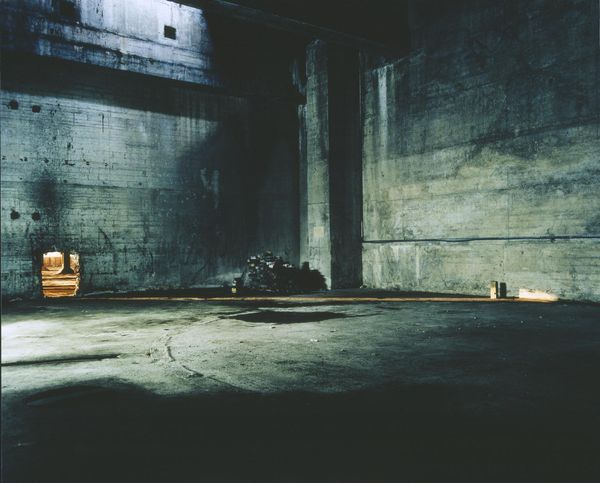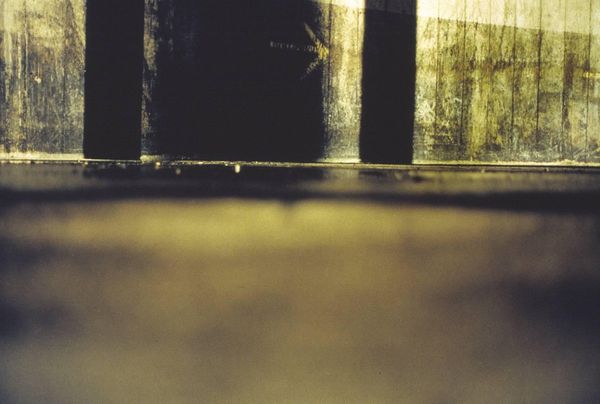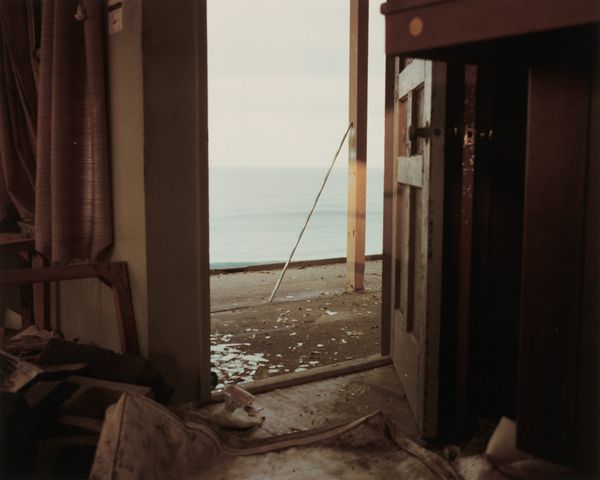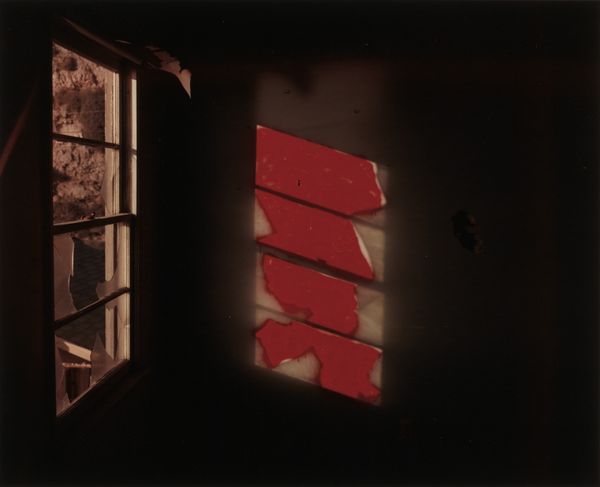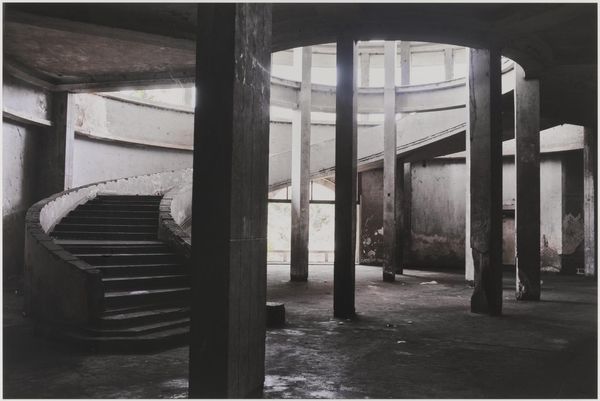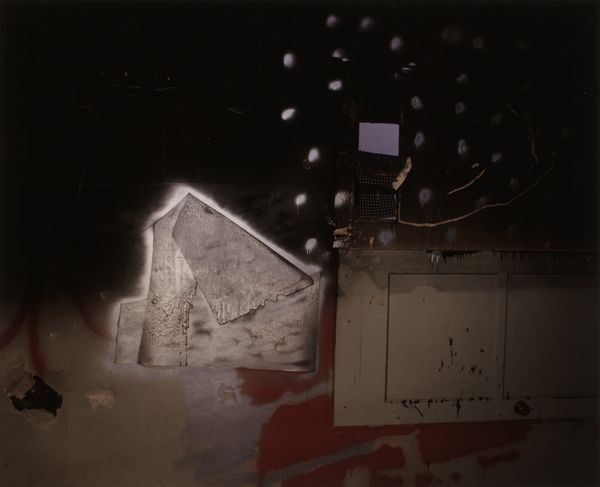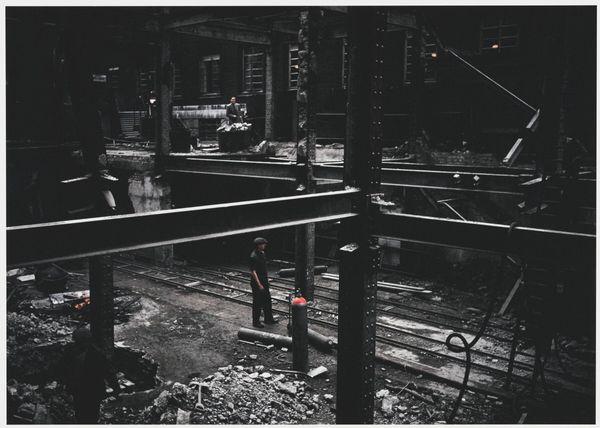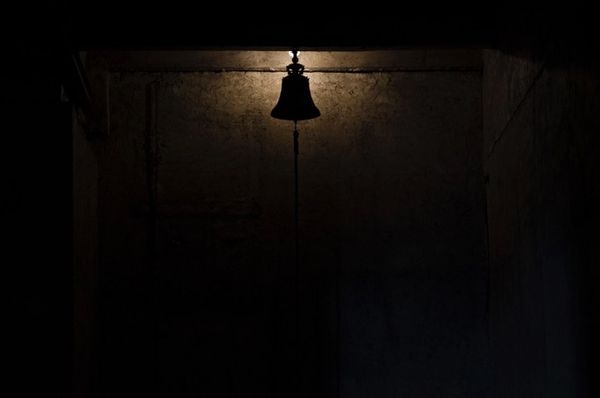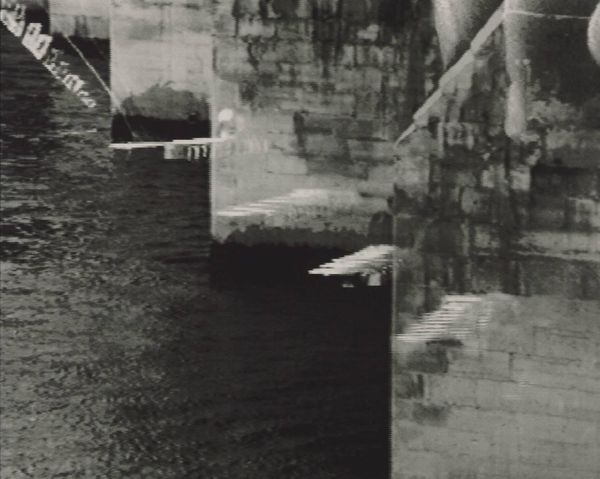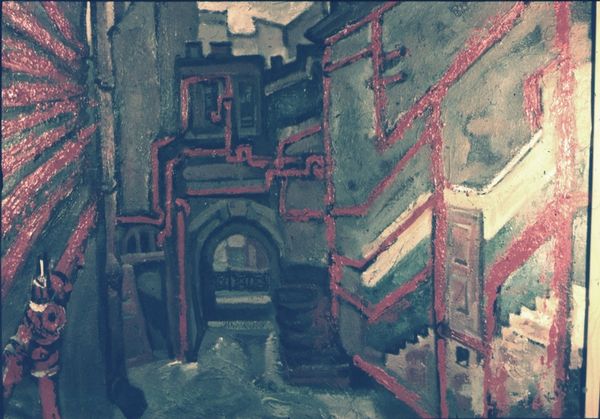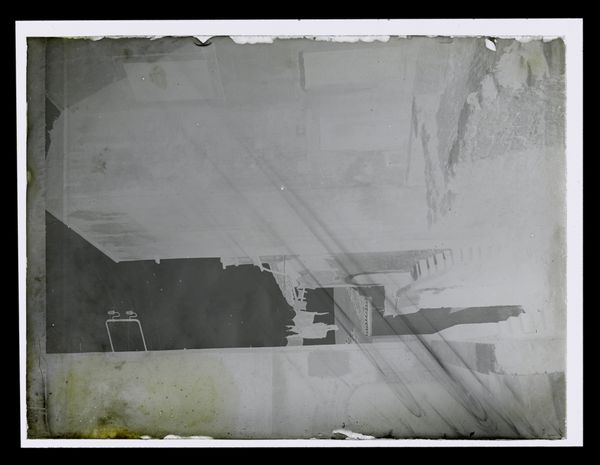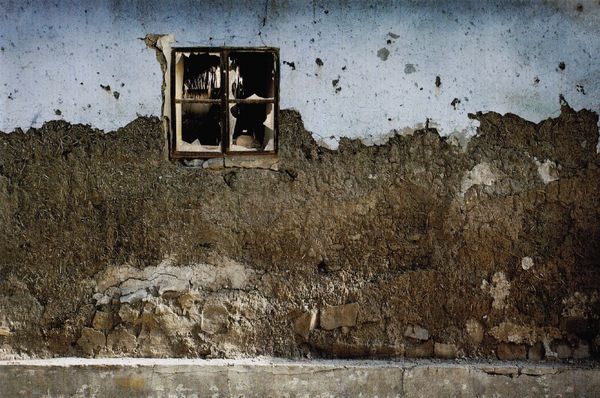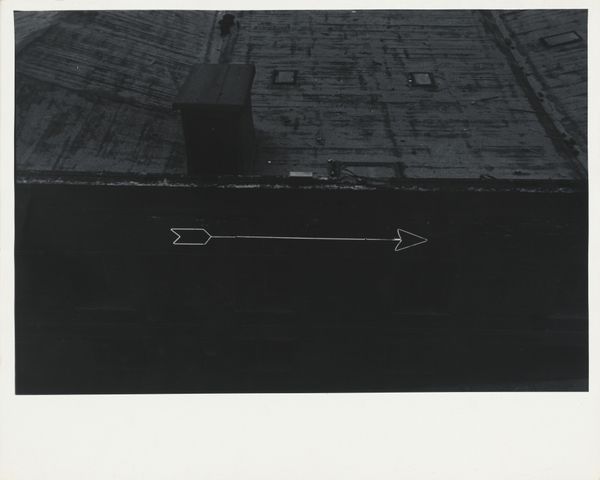
Dimensions: image: 1500 x 1840 mm
Copyright: © Christine Sullivan | CC-BY-NC-ND 4.0 DEED, Photo: Tate
Curator: Christine Sullivan's "Narcissus" presents a compelling and somewhat eerie scene. My immediate reaction is one of stark isolation, enhanced by the industrial architecture and the interplay of light and shadow. Editor: Indeed. Consider the historical context of abandoned industrial spaces. They become sites of memory, reflecting societal shifts and economic transformations. Curator: And the title, "Narcissus," adds a layer of psychological depth, hinting at themes of self-reflection and perhaps even the dangers of solipsism within these forgotten landscapes. There is a focus on the self. Editor: I agree, the mirroring effect of the water adds to that feeling and transforms the setting into a space for introspection and perhaps a critique of industrial progress and its legacy. Curator: Absolutely. The image becomes a mirror, reflecting our own anxieties about the impact of industry on our environment and psyche, particularly within patriarchal societies. Editor: The photograph is a stark reminder of the complex relationship between humanity and its creations. Curator: Precisely. It prompts us to consider our own roles in shaping and being shaped by the spaces we inhabit, physically and psychologically.
Comments
Join the conversation
Join millions of artists and users on Artera today and experience the ultimate creative platform.
tate 8 months ago
⋮
This work was the result of a commission undertaken by the artist during the transformation of the former Bankside Power Station into Tate Modern. For sixteen months between October 1998 and February 2000 Sullivan had access to the changing site as builders worked towards realising the vision of architects Herzog & de Meuron. She has described the intention of her project, saying, ‘I chose to utilize the site’s ad hoc constructions as a means to refer to art practices and locations of art production, such as alternative art spaces and industrial studio spaces’ (correspondence with the artist, 1 June 2004). This photograph forms the right panel of a diptych with Echo, 1999 (Tate P78594), although the artist has specified that the works may also be shown separately. Both images were produced in an edition of five, and depict the spaces adjacent to the undeveloped oil tanks underneath the garden to the south of the building.
